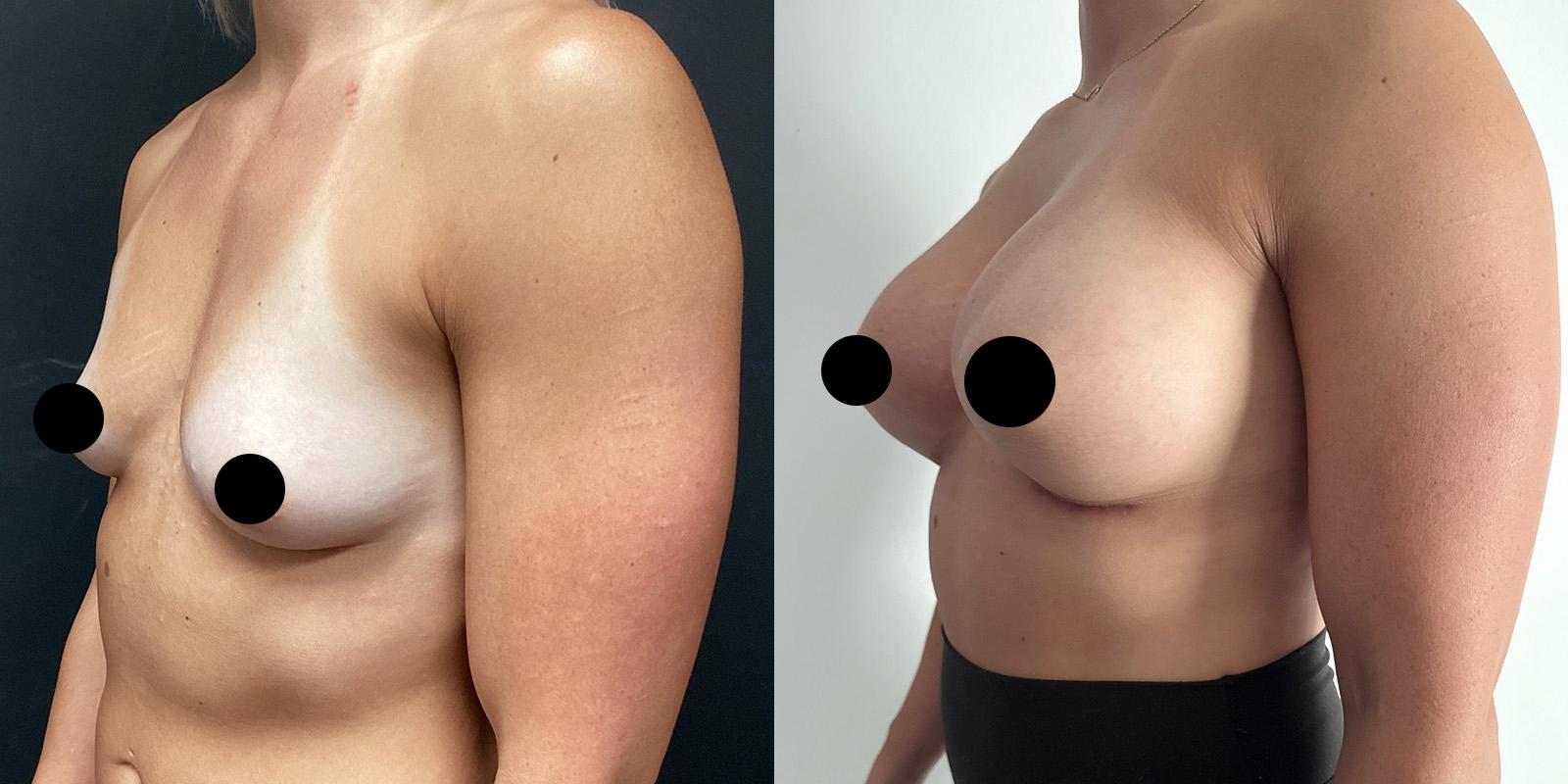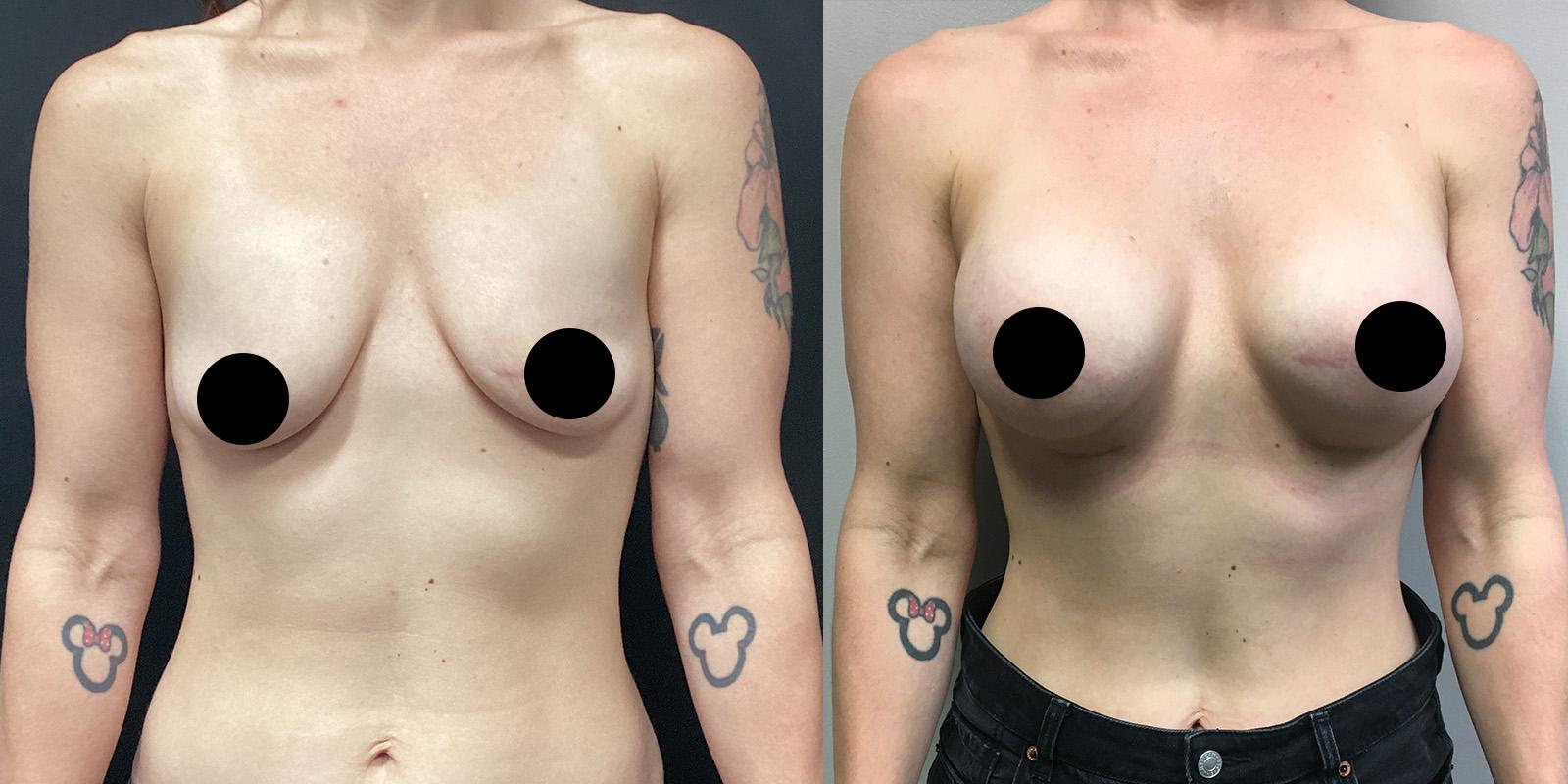Watching your favorite clothes fit awkwardly because your upper breast lacks fullness can reduce your confidence daily. The frustration intensifies when implants placed above the muscle create an unnatural, round appearance, while placement fully under the muscle leaves the lower breast looking empty. Dual plane breast augmentation solves this dilemma by combining the benefits of both placement techniques, creating naturally contoured results that move and feel authentic. This advanced surgical technique allows precise muscle release to accommodate your implant while maintaining upper pole coverage for the most natural-looking breast augmentation dual plane results.
What Is Dual Plane Breast Augmentation?
Dual plane breast augmentation is one of three primary options for breast implant placement, alongside subglandular and submuscular techniques. This advanced surgical method strategically positions the implant partially under the pectoralis major muscle in the upper region, while the lower portion rests directly behind the breast tissue. This is achieved by partially releasing the lower attachments of the pectoralis major muscle. The result is a smooth transition and natural breast contour that moves harmoniously with the body.
The dual plane technique offers significant advantages over traditional placement methods, combining many benefits of both subglandular and submuscular placements. This approach can lead to a more natural appearance and reduce the complications. Additionally, it can provide a lift for patients with mild breast ptosis, making it a popular choice for many.


Benefits of Dual Plane Placement Breast Augmentation
Natural Contouring
Dual plane placement allows the implant to expand the lower breast pole naturally while maintaining muscle coverage superiorly. This creates the soft, teardrop shape many patients desire without the artificial roundness sometimes seen with complete submuscular placement.
Reduced Animation Deformity
By selectively releasing lower muscle attachments, dual plane breast augmentation minimizes implant movement during pectoral muscle flexion, a common concern with traditional submuscular placement.
Improved Cleavage
The partial muscle release permits implants to sit closer together medially, creating better cleavage definition compared to full submuscular placement while avoiding the wide gap that frustrates many patients.
Lower Capsular Contracture Risk
Maintaining partial muscle coverage reduces direct implant-to-tissue contact, potentially lowering capsular contracture rates compared to subglandular placement.
Types of Dual Plane Techniques
Dual Plane I
Minimal muscle release at the inferior border, ideal for patients with good lower pole skin elasticity and minimal ptosis. This conservative approach maintains maximum muscle coverage while allowing subtle lower pole expansion.
Dual Plane II
Moderate muscle release extends further superiorly, accommodating patients with mild breast ptosis or constricted lower poles. This technique provides additional lower pole projection while preserving upper pole muscle coverage.
Dual Plane III
Extensive muscle release reaching the areolar border, reserved for patients with moderate ptosis or significant lower pole constriction. This aggressive approach maximizes lower pole expansion while maintaining crucial upper pole coverage.
The Dual Plane Breast Augmentation Procedure
Consultation Process
Your surgeon evaluates your breast anatomy, skin quality, and aesthetic goals during consultation to determine the appropriate dual plane level for optimal results. Digital imaging may demonstrate potential outcomes with different implant sizes and dual plane techniques.
Surgical Technique
The procedure begins with careful incision placement, typically through the inframammary fold for optimal visualization. Your surgeon creates the initial submuscular pocket, then performs precise muscle release according to the predetermined dual plane level. The implant placement follows, with meticulous attention to positioning for symmetric dual plane breast augmentation results.
Implant Selection
Both saline and silicone implants work well with dual plane placement breast augmentation. Your surgeon recommends specific implant characteristics based on your tissue quality, desired projection, and aesthetic goals.
Who is a Good Candidate?
The dual plane breast augmentation technique is particularly well-suited for a variety of patients seeking natural and lasting results. Ideal candidates typically include:
- Women experiencing mild to moderate breast sagging (ptosis): This technique is highly effective for those whose breasts have begun to droop due to factors like aging, weight fluctuations, or breastfeeding. It offers the benefit of combining partial lifting and augmentation, often negating the need for a separate breast lift.
- Individuals with thin breast tissue or limited natural volume: Patients with a slender build or naturally small breasts can achieve more balanced and natural outcomes with dual plane placement. This method ensures superior coverage in the upper breast while allowing the implant to project naturally in the lower breast.
- Mothers and women post-significant weight loss: Pregnancy, nursing, or substantial weight loss can lead to reduced breast fullness and stretched tissue. The dual plane approach effectively restores a youthful shape and volume without an artificial appearance.
- Patients with breast asymmetry or complex anatomy: Women with conditions such as tuberous breasts, a constricted breast base, or uneven breast shapes can benefit from the adaptability of this technique. Dual plane augmentation allows surgeons to address these specific concerns, promoting symmetry and softness.
- Women desiring long-lasting, natural-looking results: This method often yields enhanced breast contours that seamlessly complement the patient’s body type, resulting in an appearance and feel that is more natural than traditional implant placement techniques.
- Those in good overall health: As with any surgical procedure, candidates must be in stable health, free from serious medical conditions that could elevate surgical risks, and medically cleared for anesthesia at accredited surgical centers in Bellevue and Kirkland.
Before & After



The Surgery Experience
Your dual plane breast augmentation procedure takes place at our Medicare-certified surgical facility in Kirkland. The surgery typically requires 60-90 minutes under general anesthesia. Your surgeon will:
- Make your chosen incision (inframammary, periareolar, or transaxillary)
- Create the dual plane pocket with precise muscle release
- Place temporary sizers to confirm optimal positioning
- Insert your selected breast implants
- Ensure symmetry and natural positioning
- Close incisions with meticulous technique
Most patients return home the same day with detailed recovery instructions and prescribed medications for comfort.
Before and After Expectations
To help patients understand what to expect from dual plane breast augmentation, it’s better to see before and after transformations. Initially, breasts will appear high and swollen, with the upper part looking fuller than the final outcome. This “high-riding” effect will diminish as muscles relax and implants settle into place.
The visible results of a breast reduction will be immediate. However, it may take 6 months or longer for nipple sensitivity to return. The settling process, often called “drop and fluff,” occurs gradually over several months. During this time, implants descend into their intended position while breast tissue softens and adapts to the new volume. Eastside patients notice progressive improvement in breast shape and feel during this period.
Final results from dual plane breast augmentation before and after cases show natural breast contours with appropriate upper pole fullness and lower pole projection. The breasts move naturally with body position changes and feel soft to touch. Scarring fades significantly within the first year, becoming barely visible for most Seattle-area patients.
Recovery and Aftercare
First Week
Recovery varies based on individual healing and the extent of muscle release performed. Most patients manage discomfort with prescribed medications and return to light activities within several days. Surgical drains, if placed, typically remain 3-5 days.
Return to Activities
Desk work usually resumes within 3-5 days for most dual plane breast augmentation patients. Light exercise begins around 2 weeks, with full workouts permitted after 6 weeks. Upper body strengthening requires surgeon clearance, typically at 8-12 weeks post-procedure.
Follow-up Care
Regular follow-up appointments monitor healing and implant positioning. Your surgeon provides specific massage instructions if indicated, though many dual plane patients require minimal manipulation due to optimal initial positioning.
Cost of Dual Plane Breast Augmentation
At Seattle Plastic Surgery, the price of dual plane augmentation starts from $4,995/-, excluding prescription medications and medical clearance.
The cost of dual plane breast augmentation depends on factors such as surgeon expertise, implant selection, and facility-related expenses. This approach may involve higher costs compared to traditional placement techniques due to its advanced precision and surgical time.
When reviewing costs, patients should consider the long-term benefits of natural results, minimized complications, and improved outcomes provided by the dual plane method.
Schedule Your Dual Plane Breast Augmentation Consultation
Transform your look with expertly performed dual plane breast augmentation that delivers the natural results you deserve. Book online today to schedule your personalized consultation or Call (206) 324-1120 discover how this advanced technique creates beautiful, lasting enhancement.
Frequently Asked Questions
What is dual plane breast augmentation?
Dual plane breast augmentation involves selective pectoralis muscle release, allowing implants to sit partially behind muscle and partially behind breast tissue. This technique combines the benefits of both submuscular and subglandular placement for optimal aesthetic results.
What does dual plane mean in breast augmentation?
Dual plane refers to the two distinct tissue planes involved – the implant’s upper portion sits beneath the pectoralis muscle, while the lower portion rests behind breast tissue only. This configuration occurs after strategic muscle release during surgery.
What is the difference between dual plane and under the muscle?
Traditional under the muscle placement keeps the entire implant beneath intact pectoralis muscle. Dual plane selectively releases lower muscle attachments, allowing controlled implant positioning that better defines the lower breast pole and reduces animation deformity.

